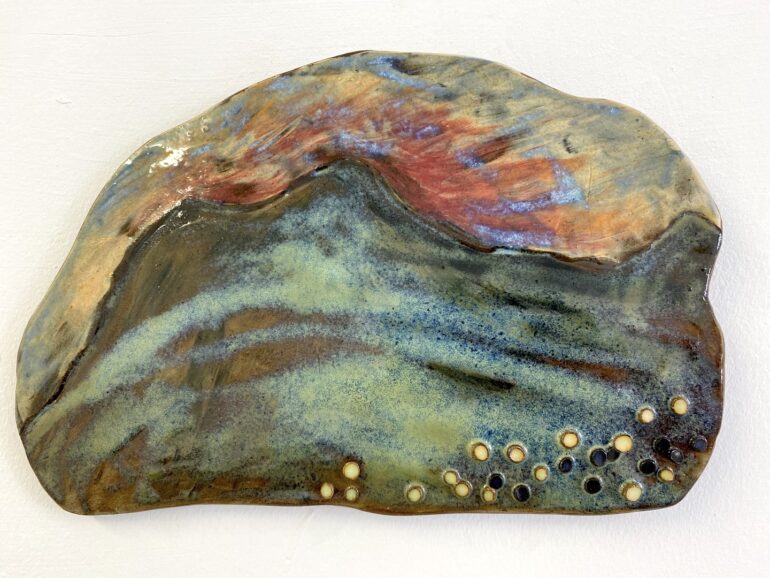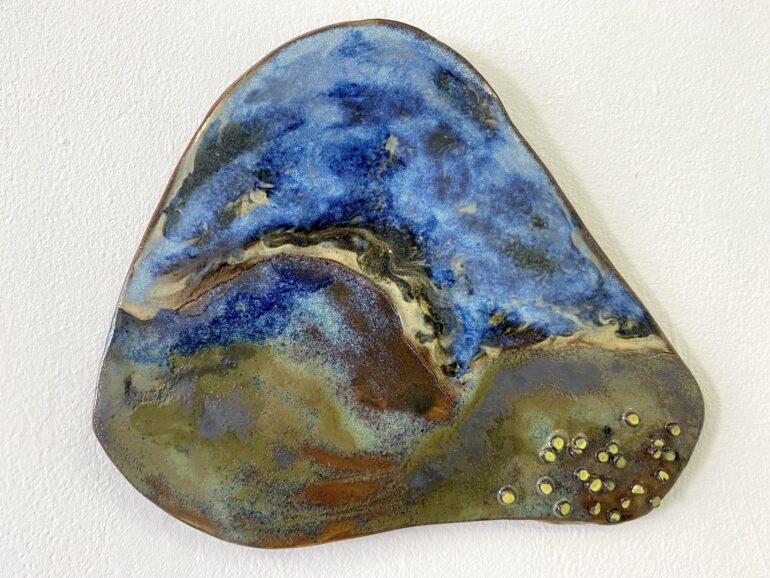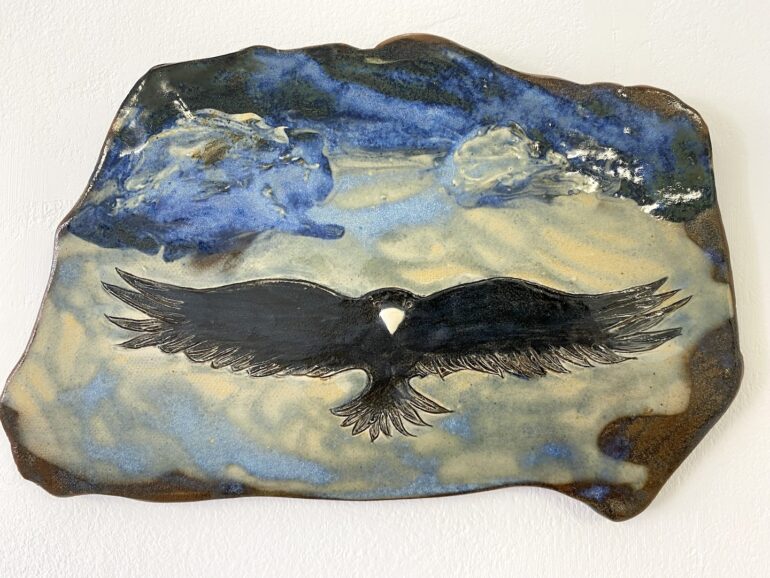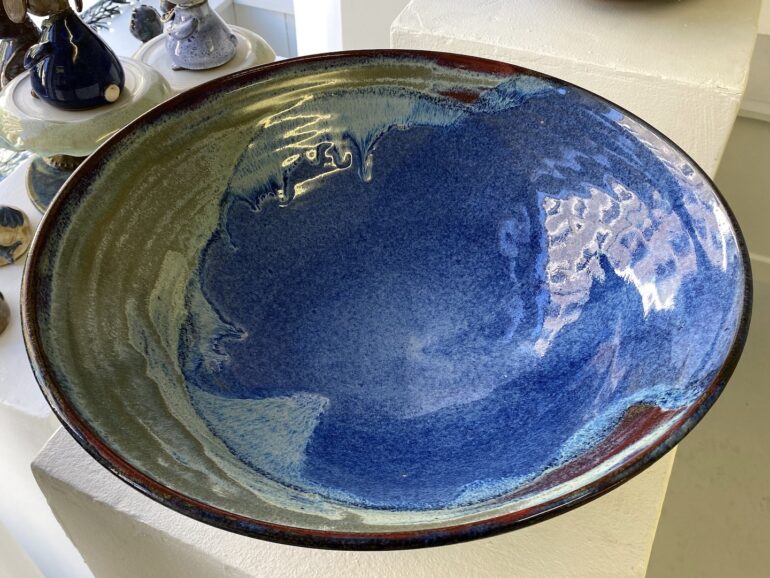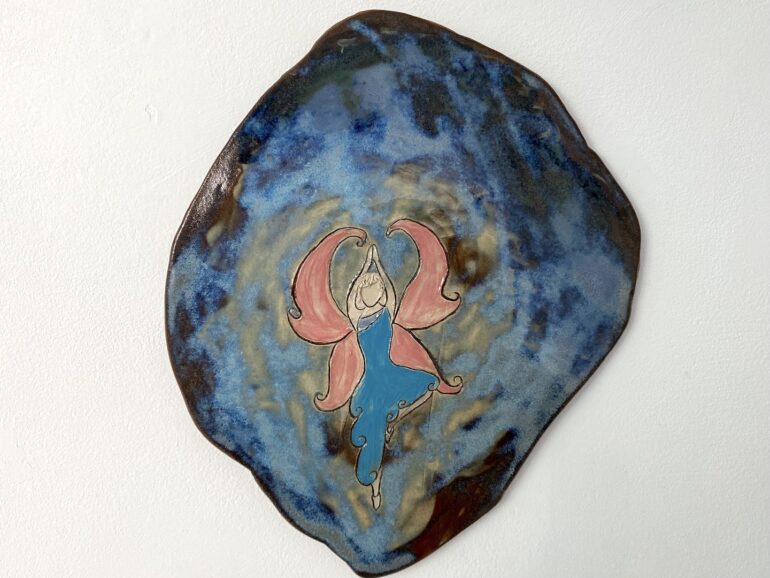Humans need fantasy to be human. To be the place where the falling angel meets the rising ape. Terry Pratchett from Hogfather.
Bairbre Kennedy makes forms, hand built and thrown. She transforms her material by mixing, rolling, kneading, shaping, slicing, painting and eventually firing. Her curiosity gives way to the unpredictability of a kiln. It is because she can’t control the outcomes, that she incurs a sort of thinking-through-making; an active exchange with substances linked, as we are, to natural and man-made environments. Such interactions encourage her to go outside the domestic space and into the local landscape. She captures the light that settles on the glens here, in blueish-colored slips. Her images are populated with strange flower trees decorated with ornamental blossoms adding to a sense of fantasy. These are ceramics without the burden of function, clay that disregards utility. The blossoms with their repetitive crafting are obsessive gestures, exposing intricate labour. The ornamental has been rehabilitated as sensuous and seductive, evoking joy in detail and texture.
In Kennedy’s case, the detail signifies both form and content as they are partly made from local clays. The word ‘earth’ used to mean soil or clay, now it stands for ‘planet’; holding within its meaning the macro and the micro. This contrast between detail and scale arose during her pandemic experience (a time to notice stuff). On occasion, she draws female figures onto the clay. I reflect that there’s something soft and squidgy about their cartoony form which appeals to a camp sensibility. They are ‘alive to a double sense in which some things can be taken’ (Susan Sontag, Notes on Camp). They are divest from notions of mastery and belong to the politics of play and humour.
Ever since the 1970s, craft has been making inroads into fine art spaces, questioning modernist discourse that defined ‘art’ and ‘artist’. An understanding of material engagement between artist, tools, technique and spectator provides fertile ground for new understandings of craft as knowledge, experience and resourcefulness. Kennedy’s ceramics float free from their moorings. Her ludic strategy is also a therapeutic process, healing and quieting the mind from the way things sometimes are.
Mary Theresa Keown

